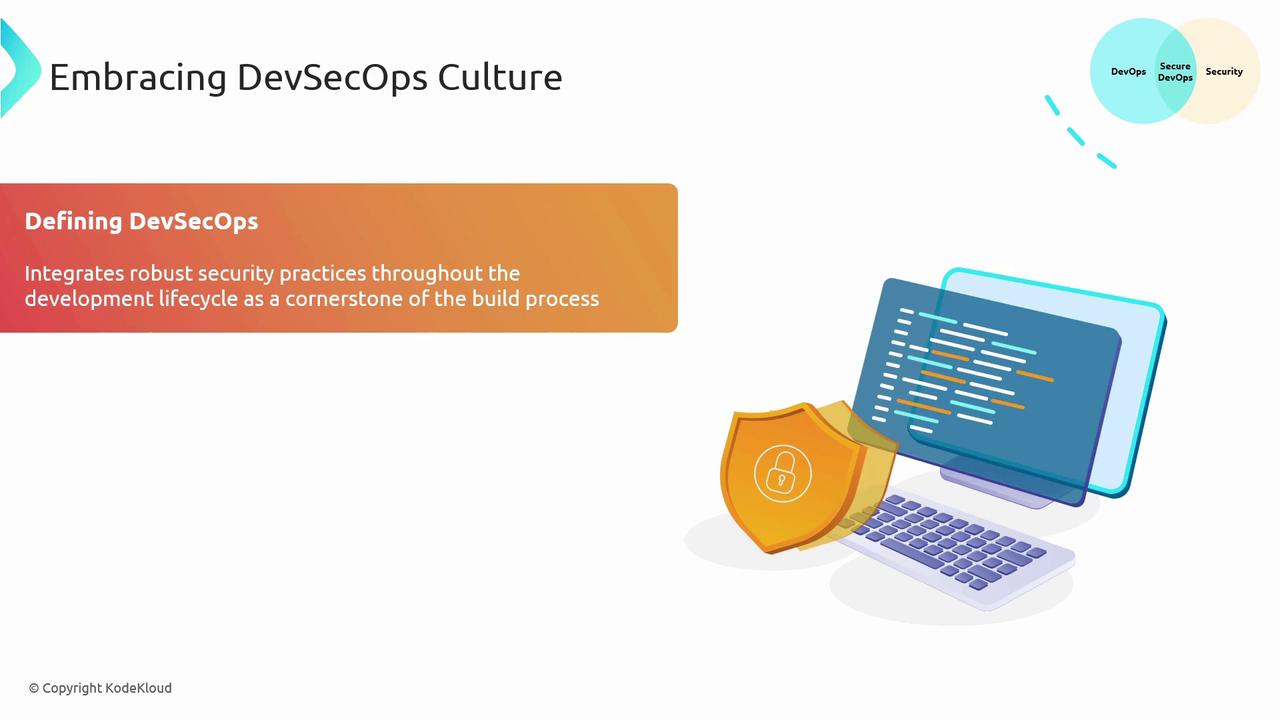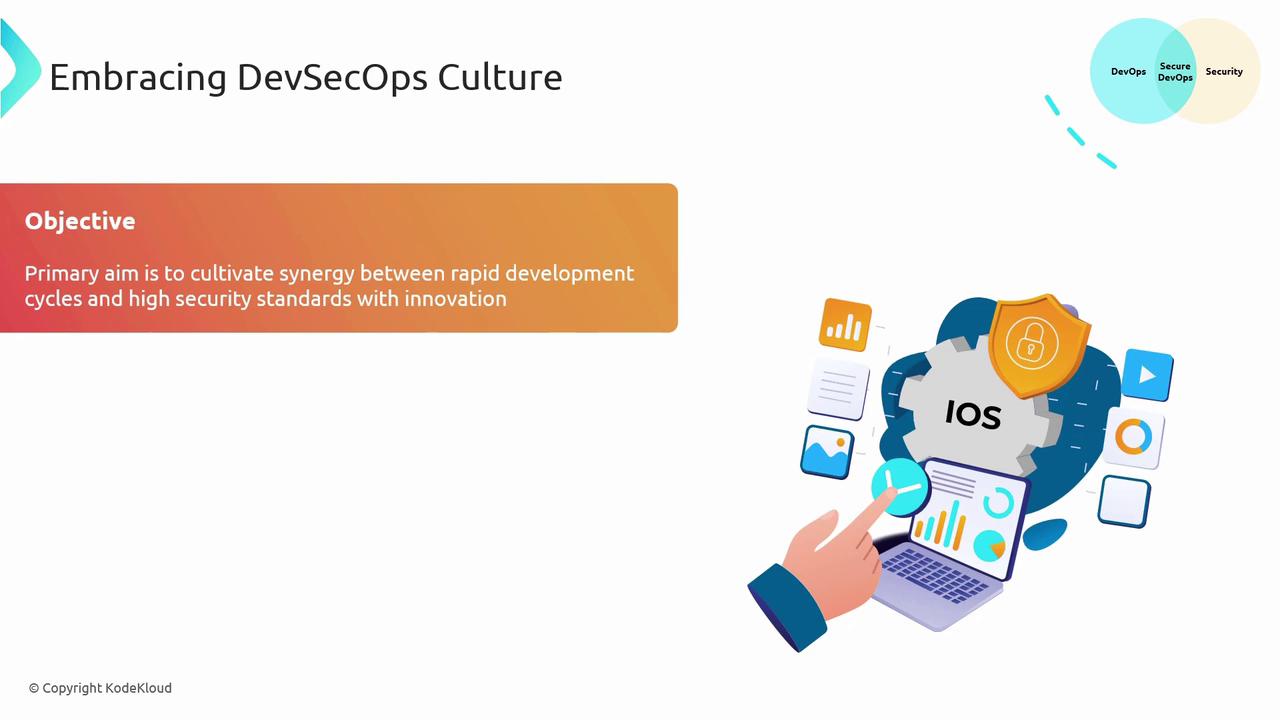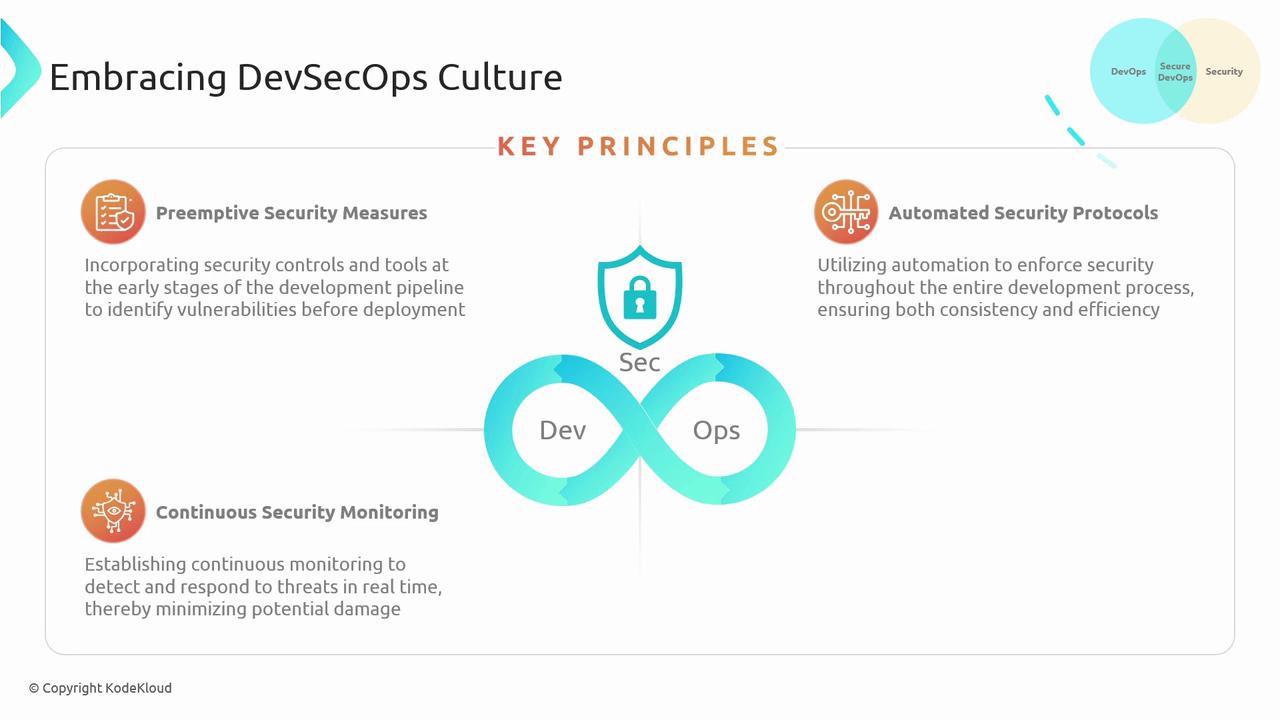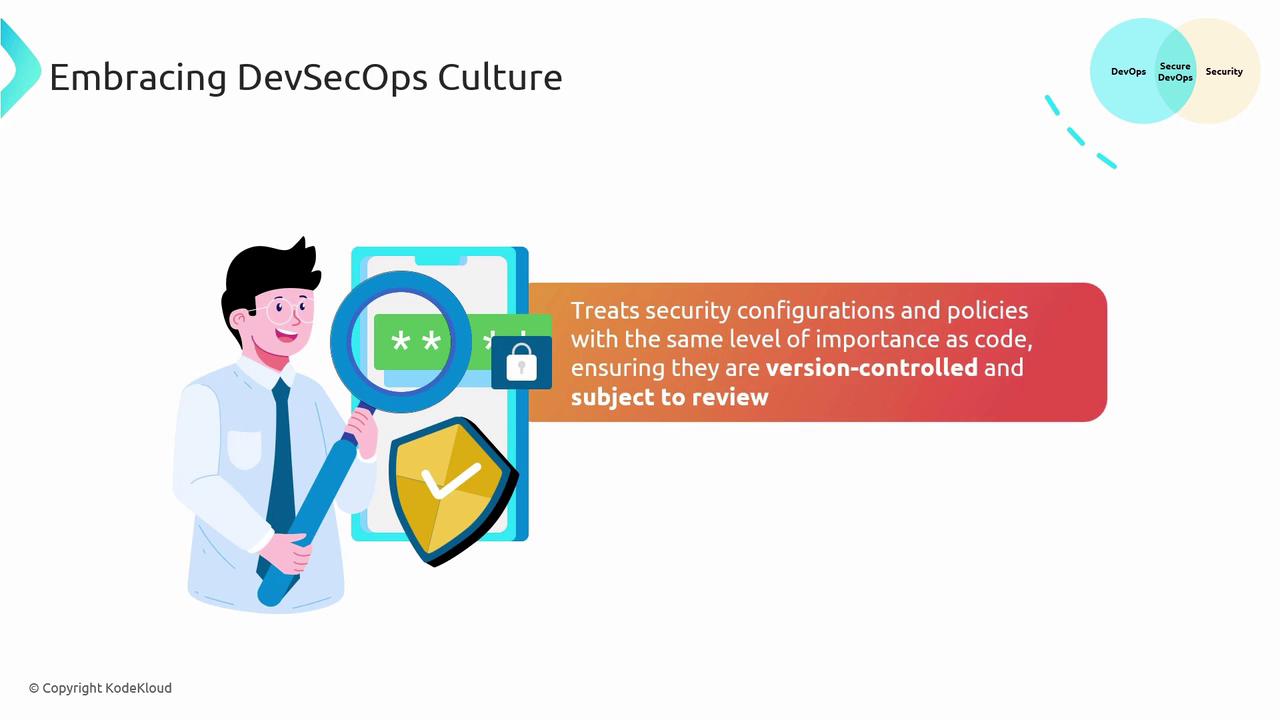AZ-400: Designing and Implementing Microsoft DevOps Solutions
Implement Security and Validate Code Bases for Compliance
Embracing DevSecOps Culture
In this lesson, we’ll unpack DevSecOps—its concept, cultural impact, and tangible benefits for modern software delivery.
What Is DevSecOps?
DevSecOps merges development, operations, and security teams into a unified workflow. By tearing down traditional silos, you ensure security is embedded from the first line of code to production.

In legacy models, developers ship features, operations teams handle deployment, and security checks happen at the end—often causing delays. DevSecOps flips this by integrating security in every phase of your CI/CD pipeline.
Balancing Speed and Security
Accelerating release cycles is vital for staying competitive, but not at the expense of security. DevSecOps harmonizes rapid development with robust protection mechanisms.

By shifting security left—introducing controls early—you can innovate faster without creating exploitable gaps.
Key Principles of DevSecOps
Start by standardizing your approach. The table below summarizes the four pillars of a mature DevSecOps practice:
| Principle | Focus | Example Tools |
|---|---|---|
| Preemptive Security Measures | Early vulnerability detection | SonarQube, Snyk |
| Automated Security Protocols | Consistent policy enforcement | Open Policy Agent, Checkov |
| Continuous Security Monitoring | Real-time threat detection | Prometheus, Splunk |
| Cross-Disciplinary Collaboration | Shared security ownership | Slack, Jira, Microsoft Teams |
1. Preemptive Security Measures
Embed static code analysis, dependency scanning, and threat modeling at the earliest stages. Early detection keeps vulnerabilities out of production.
2. Automated Security Protocols
Integrate automated policy checks, container scans, and compliance gates into your build and release pipelines. Automation reduces human error and enforces consistency.
3. Continuous Security Monitoring
Use real-time monitoring, alerting, and incident response workflows to detect threats immediately and limit impact.

4. Cross-Disciplinary Collaboration
Cultivate shared responsibility across development, operations, and security teams. Transparent communication and joint ownership drive faster, safer outcomes.
Security as Code
Treat security configurations—policies, rules, and scripts—as version-controlled code. This ensures every change is peer-reviewed, auditable, and automatically deployed via CI/CD.

Warning
Embedding sensitive credentials directly in code can expose secrets. Use secret-management tools such as HashiCorp Vault or AWS Secrets Manager to safeguard keys and tokens.
Conclusion
By adopting these DevSecOps best practices—preemptive security, pipeline automation, continuous monitoring, cross-team collaboration, and security as code—organizations gain the agility needed for modern software delivery without compromising their security posture.
Links and References
- DevSecOps Overview – AWS
- CI/CD Security Best Practices – Microsoft Azure
- Security as Code – HashiCorp Learn
- OWASP DevSecOps Guidelines
- NIST Secure Software Development Framework (SSDF)
Watch Video
Watch video content